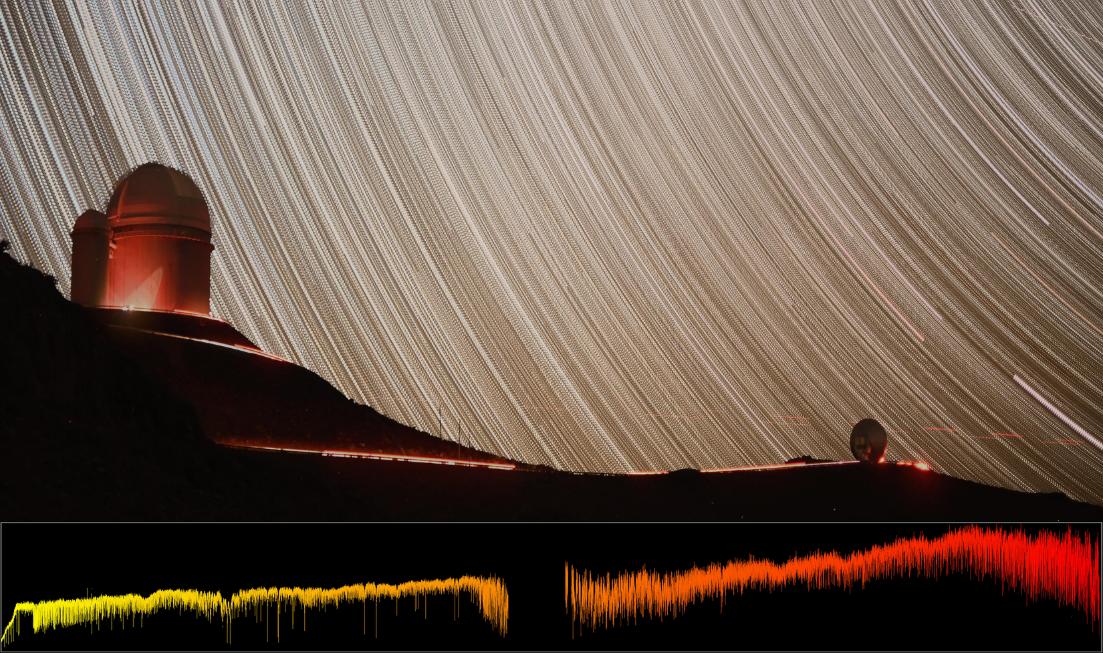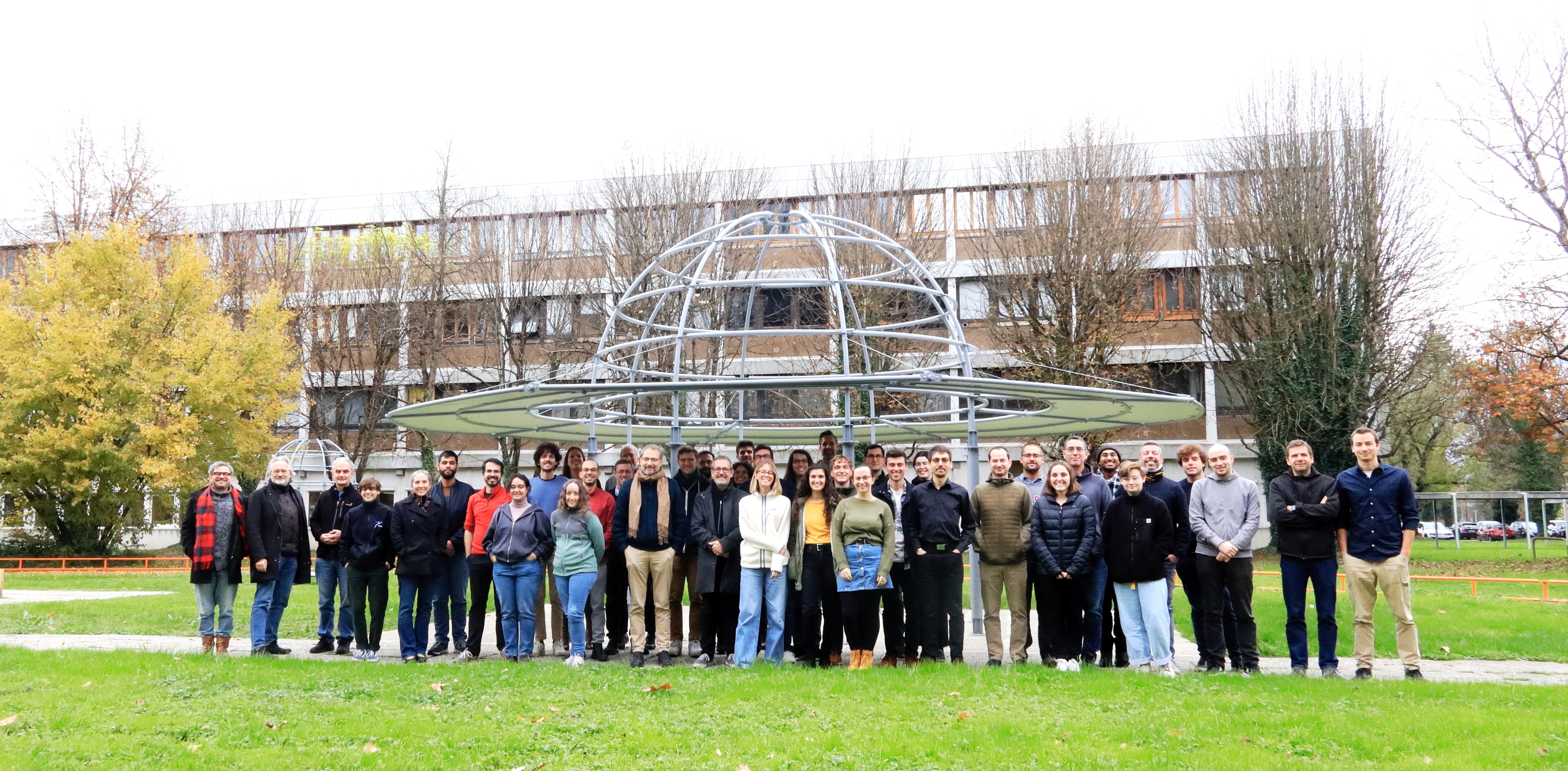Infrared eye on the sky is a game changer in the quest for distant worlds

Top: The instrument NIRPS is installed on the 3.6-metre telescope at La Silla Observatory in Chile. Below: A spectrum taken by NIRPS during preliminary tests in June 2023 of the star Proxima Centauri, our nearest neighbour. (Etienne Artigau images)
BY Andrea Lawson
July 29, 2025
A powerful new instrument designed to detect and study distant worlds is already delivering on its promise and McMaster University researchers are playing a key role in the science behind it.
The Near InfraRed Planet Searcher (NIRPS) is a high-resolution spectrograph mounted on the European Southern Observatory’s 3.6-metre telescope in Chile. It is designed to detect small, Earth-like planets orbiting cool, red stars known as M dwarfs — the most common stars in the galaxy.
NIRPS detects tiny shifts in a star’s motion, known as radial velocity changes, caused by the gravitational tug of orbiting planets. As a planet orbits, it pulls slightly on its star, causing the star to wobble back and forth. By measuring this wobble over time, scientists can detect the presence of planets, including ones that are too faint or far away to see directly.
“Precise radial velocity studies at infrared wavelengths have been notoriously difficult to conduct,” says Ryan Cloutier, an assistant professor of Physics and Astronomy and a core member of the NIRPS science team.
“For the first time, we’re achieving sub-metre-per-second radial velocity precision in the infrared — something that was previously only possible in visible light. That’s a game-changer for studying planets around M dwarfs, which emit most of their light in the infrared spectrum.”
NIRPS is also well suited for studying the atmospheres of distant planets and their host stars. Its infrared sensitivity allows astronomers to detect key chemical signatures in planetary atmospheres such as water vapour, helium and methane, while also giving insight into planetary interiors by detecting planetary building blocks in the star such as iron, magnesium and silicon.
NIRPS is the product of a decade-long collaboration between institutions in Canada, Switzerland, France, Brazil, Portugal and Spain, co-led by researchers at the Université de Montréal and the Université de Genève.
Since it began operating in April 2023, NIRPS has confirmed the presence of Proxima Centauri b — an Earth-like planet in the habitable zone of Proxima Centauri, the closest star to our sun — and hinted at the existence of a second, even smaller planet in the same system.

Cloutier helped shape the scientific goals of NIRPS during its early planning stages. His involvement as a core science team member makes McMaster a key player in the project’s next phase: discovery.
Cloutier now leads a team of McMaster students and postdoctoral researchers who are using NIRPS to explore how planets form and evolve around M dwarfs. Their work is part of the Guaranteed Time Observations (GTO) program, which grants the core science team exclusive access to hundreds of nights of telescope time.
One of the flagship GTO projects is the Core Mass Fraction program, led by Master’s student Drew Weisserman.
This study focuses on “hot super-Earths,” which are rocky planets slightly larger than Earth that orbit very close to their stars. By measuring the wobbles caused by these planets, Weisserman is determining their masses with extreme precision.
Combined with known planetary radii, these measurements allow researchers to infer the planets’ internal structures and determine how much of each planet is made up of iron versus silicate rock.
“If a planet has more iron than expected, it might be the result of a massive collision that stripped away its outer layers,” Cloutier explains.
“If it has less, it could mean the planet formed with a significant amount of water or other low-density materials. Either way, we’re learning about how these worlds came to be.”
To establish a baseline for these comparisons, PhD student Nicole Gromek developed software to measure the elemental composition of the stars themselves.
Her work, which involved analyzing complex infrared spectra of cool stars, is now being used across multiple NIRPS science programs.
Meanwhile, postdoctoral researcher Ares Osborn is leading the Deep-Search program, to characterize the global architectures of planetary systems that have at least one known planet, to see if there are additional planets in those systems, especially ones farther out from the star.
Finding these kinds of planets helps scientists understand how planetary systems are structured and how efficient the planet formation process is around M dwarfs.
“NIRPS is helping us understand the dominant formation and evolutionary processes of exoplanets around M dwarfs,” says Cloutier.
“Given the prevalence of M dwarfs throughout the Milky Way, that knowledge is essential to our understanding of how our solar system fits in the big picture.”


